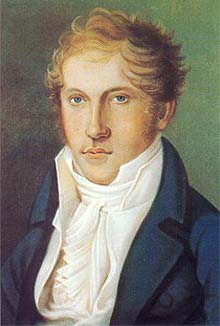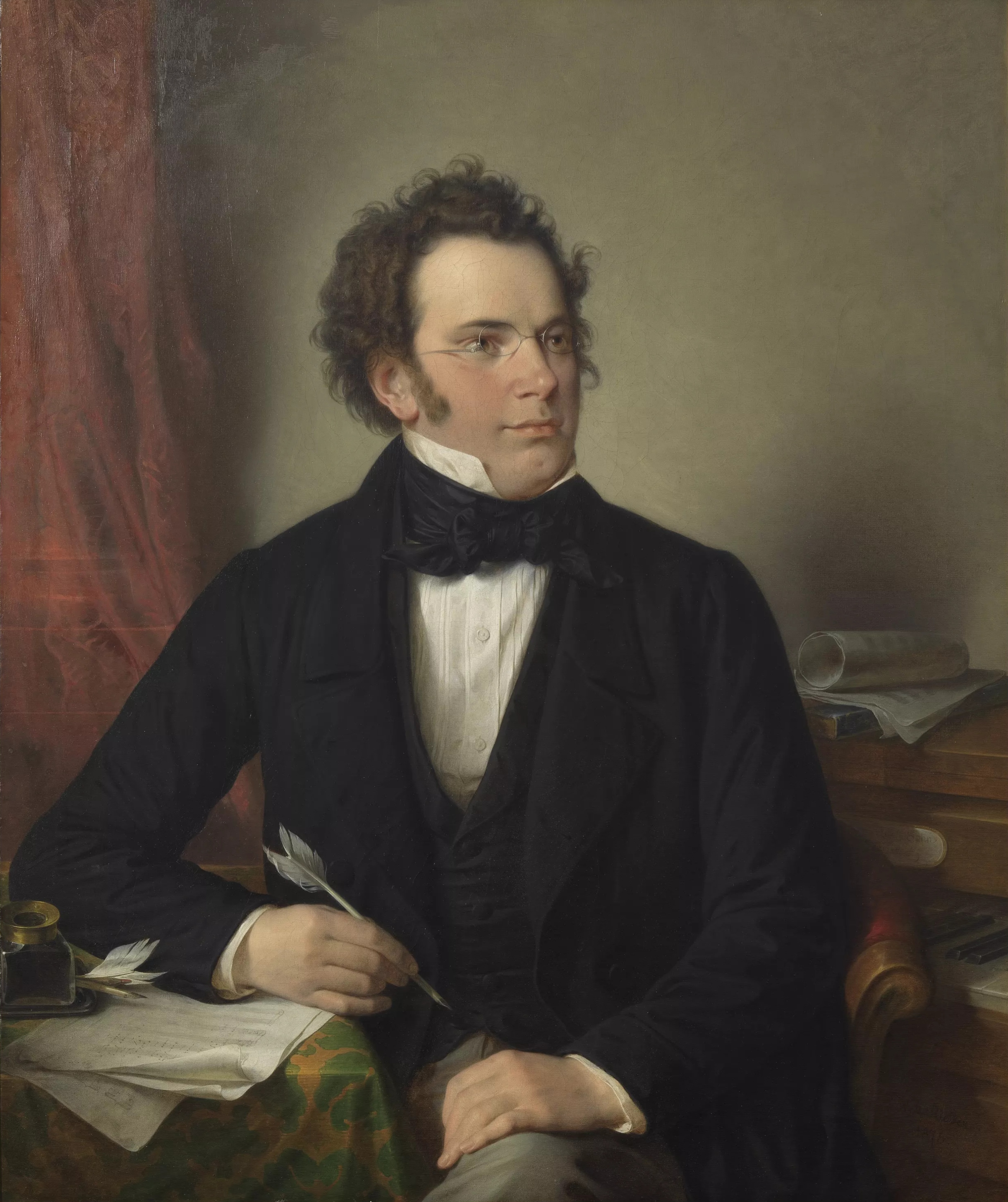|
1820 In Music
This is a list of music-related events in 1820. Events * Pietro Raimondi returns to Naples and begins his career as an opera composer. *The Musical Fund Society is founded at Musical Fund Hall in Philadelphia. Its first public concert on April 22, 1821, featured Beethoven's 2nd Symphony. *Franz Liszt plays in public for the first time in Ödenburg. Classical music * Ludwig van Beethoven – Piano Sonata No. 30 * Franz Berwald – Violin Concerto in C sharp minor, Op. 2 * Fanny Mendelssohn-Hensel – "Annette", H-U 14 * Friedrich Kuhlau **3 Sonatinas, Op.20 **Fantasy and Variations, Op.25 *Felix Mendelssohn **"Raste Krieger, Krieg ist aus" MWV K 2 ** Violin Sonata in F major, MWV Q 7 **Recitativo in E minor, MWV U 11 **Piano Piece in E minor, MWV U 12 **Piano Piece in E minor, MWV U 18 * Ignaz Moscheles – Piano Concerto No.3, Op.58 * Ferdinand Ries – Sextet, Op.100 (On "The Last Rose of Summer") * Friedrich Schneider – ''Das Weltgericht'', Op.46 * Franz Schu ... [...More Info...] [...Related Items...] OR: [Wikipedia] [Google] [Baidu] |
Ignaz Moscheles
Isaac Ignaz Moscheles (; 23 May 179410 March 1870) was a Bohemian piano virtuoso and composer. He was based initially in London and later at Leipzig, where he joined his friend and sometime pupil Felix Mendelssohn as professor of piano at the Conservatory. Life Early life and career Moscheles was born 1794 in Prague, Bohemia, the son of Klara Popper (Lieben) and Joachim Moises Moscheles. He was from an affluent German-speaking Jewish merchant family. His first name was originally Isaac. His father played the guitar and was keen for one of his children to become a musician. Initially his hopes fixed on Ignaz's sister, but when she demurred, her piano lessons were transferred to her brother. Ignaz developed an early passion for the (then revolutionary) piano music of Beethoven, which the Mozartean Bedřich Diviš Weber, his teacher at the Prague Conservatory, attempted to curb, urging him to focus on Bach, Mozart and Muzio Clementi. After his father's early death, Moscheles se ... [...More Info...] [...Related Items...] OR: [Wikipedia] [Google] [Baidu] |
Maometto II
''Maometto II'' (or ') is an 1820 opera in two acts by Gioachino Rossini to an Italian libretto by Cesare della Valle. Set in the 1470s during a time of war between the Turks and Venetians, the work was commissioned by the Teatro di San Carlo in Naples. Della Valle based his libretto on his earlier play ''Anna Erizo''. The name of the title character, Maometto II, refers to the real-life Ottoman Sultan and conqueror of Constantinople Mehmed II, who lived from 1432 to 1481. Regarded "in some ways s hismost ambitious opera"Brauner, Patricia and Gossett, Philip, "''Maometto II''" in Holden p. 787 and as "the best of Rossini's Neapolitan operas", ''Maometto II'' failed to find an audience in Naples and, "to help ensure tssuccess in Venice and Paris, he smoothed out the most audacious elements of the score". Venice first saw it on 22 December 1822 and then, translated into French and changed significantly, it was presented as ''Le siège de Corinthe'' in 1826. Until the prepara ... [...More Info...] [...Related Items...] OR: [Wikipedia] [Google] [Baidu] |
Gioachino Rossini
Gioachino Antonio Rossini (29 February 1792 – 13 November 1868) was an Italian composer who gained fame for his 39 operas, although he also wrote many songs, some chamber music and piano pieces, and some sacred music. He set new standards for both comic and serious opera before retiring from large-scale composition while still in his thirties, at the height of his popularity. Born in Pesaro to parents who were both musicians (his father a trumpeter, his mother a singer), Rossini began to compose by the age of 12 and was educated at music school in Bologna. His first opera was performed in Venice in 1810 when he was 18 years old. In 1815 he was engaged to write operas and manage theatres in Naples. In the period 1810–1823 he wrote 34 operas for the Italian stage that were performed in Venice, Milan, Ferrara, Naples and elsewhere; this productivity necessitated an almost formulaic approach for some components (such as overtures) and a certain amount of self-borrowing. During ... [...More Info...] [...Related Items...] OR: [Wikipedia] [Google] [Baidu] |
Turin
Turin ( , Piedmontese language, Piedmontese: ; it, Torino ) is a city and an important business and cultural centre in Northern Italy. It is the capital city of Piedmont and of the Metropolitan City of Turin, and was the first Italian capital from 1861 to 1865. The city is mainly on the western bank of the Po (river), Po River, below its Susa Valley, and is surrounded by the western Alps, Alpine arch and Superga Hill. The population of the city proper is 847,287 (31 January 2022) while the population of the urban area is estimated by Larger Urban Zones, Eurostat to be 1.7 million inhabitants. The Turin metropolitan area is estimated by the Organisation for Economic Co-operation and Development, OECD to have a population of 2.2 million. The city used to be a major European political centre. From 1563, it was the capital of the Duchy of Savoy, then of the Kingdom of Sardinia ruled by the House of Savoy, and the first capital of the Kingdom of Italy from 1861 to 1865. T ... [...More Info...] [...Related Items...] OR: [Wikipedia] [Google] [Baidu] |
Teatro Carignano
The Teatro Carignano (Carignano Theatre) is a theatre in Turin and one of the oldest and most important theatres in Italy. Designed by Benedetto Alfieri, it is located opposite the Palazzo Carignano. Building commenced in 1752 and the theatre was inaugurated the following year with a performance of Baldassare Galuppi's opera, ''Calamità de' cuori''. Much of the theatre was destroyed in a fire in 1786, but it was rebuilt in a few months using Alfieri's original plans. Since then it has undergone several renovations. Although today it is primarily used for performances of plays, in the past it was an important opera house. The theatre is owned by the City of Turin but administered by the theatre company, Teatro Stabile di Torino, and is one of the company's principal performing venues. Premieres and debuts Premieres and notable debuts at the Teatro Carignano include: *Giovanni Pacini's opera ''La schiava in Bagdad'' (world premiere, 28 October 1820) *Nicola Vaccai's opera ''La pasto ... [...More Info...] [...Related Items...] OR: [Wikipedia] [Google] [Baidu] |
Giovanni Pacini
Giovanni Pacini (11 February 17966 December 1867) was an Italian composer, best known for his operas. Pacini was born in Catania, Sicily, the son of the buffo Luigi Pacini, who was to appear in the premieres of many of Giovanni's operas. The family was of Tuscan origin, living in Catania when the composer was born. His first 25 or so operas were written when Gioachino Rossini dominated the Italian operatic stage. But Pacini's operas were "rather superficial", a fact which, later, he candidly admitted in his ''Memoirs''.Rose 2001, in Holden, p. 650 For some years he held the post of "director of the Teatro San Carlo in Naples." Later, retiring to Viareggio to found a school of music, Pacini took time to assess the state of opera in Italy and, during a five-year period during which he stopped composing, laid out his ideas in his Memoirs. Like Saverio Mercadante, who also reassessed the strength and weaknesses of this period in opera, Pacini's style did change, but he quickly becam ... [...More Info...] [...Related Items...] OR: [Wikipedia] [Google] [Baidu] |
Juan Crisóstomo Arriaga
Juan Crisóstomo Jacobo Antonio de Arriaga y Balzola (27 January 1806 – 17 January 1826) was a Spanish Basque people, Basque composer. He was nicknamed "the Spanish Mozart" after he died, because, like Wolfgang Amadeus Mozart, he was both a child prodigy and an accomplished composer who died young. They also shared the same first and second baptismal names; and they shared the same birthday, 27 January (fifty years apart). Life Juan Crisóstomo Arriaga was born in Bilbao, Biscay, on what would have been Mozart's fiftieth birthday. His father (Juan Simón de Arriaga) and the boy's older brother first taught him music. Juan Simón had some musical talent and at age seventeen Juan Crisóstomo was an organist at a church in Berriatua, Berriatúa. Juan Simón worked in Guernica and in 1804 moved to Bilbao and became a merchant in wool, rice, wax, coffee and other commodities. The income generated in this way allowed Juan Simón to think about providing his son, who had shown prodigio ... [...More Info...] [...Related Items...] OR: [Wikipedia] [Google] [Baidu] |
Louis Spohr
Louis Spohr (, 5 April 178422 October 1859), baptized Ludewig Spohr, later often in the modern German form of the name Ludwig, was a German composer, violinist and conductor. Highly regarded during his lifetime, Spohr composed ten symphonies, ten operas, eighteen violin concerti, four clarinet concerti, four oratorios, and various works for small ensemble, chamber music, and art songs.Clive Brown. "Spohr, Louis." Grove Music Online. Oxford Music Online. 18 May 2012 Spohr invented the violin chinrest and the orchestral rehearsal mark. His output spans the transition between Classical and Romantic music, but fell into obscurity following his death, when his music was rarely heard. The late 20th century saw a revival of interest in his oeuvre, especially in Europe. Life Spohr was born in Braunschweig in the duchy of Brunswick-Wolfenbüttel to Karl Heinrich Spohr and Juliane Ernestine Luise Henke, but in 1786 the family moved to Seesen. Spohr's first musical encouragement ... [...More Info...] [...Related Items...] OR: [Wikipedia] [Google] [Baidu] |
Lazarus (Schubert)
''Lazarus'' or ', 689, is an unfinished 1820 oratorio by Franz Schubert on a libretto by August Hermann Niemeyer. Intended to be in three acts, only act 1 with twenty-one numbers, and eight numbers from act 2 are extant. Structure The work is for three sopranos, two tenors, bass, mixed choir and orchestra. Act 1 Act 2 Roles *Maria (soprano) *Martha (soprano) *Jemina (soprano) *Lazarus (tenor) *Nathanael (tenor) *Ein Jüngling (tenor) *Simon Peter (bass) Recordings *1978 – Carola Nossek, Ursula Reinhardt-Kiss, Ingeborg Springer, Eberhard Büchner, Horit Gebhardt. Staatskapelle Berlin Dietrich Knothe recorded in the Christuskirche, Berlin Berlin Classics 94452BC; reissued 1 CD Brilliant Classics *1981 – (also Mass No. 2 in G, D 167), Theodor Guschlbauer Warner Apex 2008 *1983 – Edith Mathis, Wulkopf, Schwarz, Hollweg, Laubenthal, Hermann Prey conducted , Orfeo 2LP *1983 - Lucia Popp, Robert Tear, Helen Donath, Maria Venuti, Josef Protschka, Dietrich Fischer-Die ... [...More Info...] [...Related Items...] OR: [Wikipedia] [Google] [Baidu] |
Franz Schubert
Franz Peter Schubert (; 31 January 179719 November 1828) was an Austrian composer of the late Classical and early Romantic eras. Despite his short lifetime, Schubert left behind a vast ''oeuvre'', including more than 600 secular vocal works (mainly lieder), seven complete symphonies, sacred music, opera Opera is a form of theatre in which music is a fundamental component and dramatic roles are taken by singers. Such a "work" (the literal translation of the Italian word "opera") is typically a collaboration between a composer and a libr ...s, incidental music, and a large body of piano and chamber music. His major works include "Erlkönig (Schubert), Erlkönig" (D. 328), the Trout Quintet, Piano Quintet in A major, D. 667 (''Trout Quintet''), the Symphony No. 8 (Schubert), Symphony No. 8 in B minor, D. 759 (''Unfinished Symphony''), the Symphony No. 9 (Schubert), "Great" Symphony No. 9 in C major, D. 944, the String Quintet (Schubert), String Quintet (D. 956), ... [...More Info...] [...Related Items...] OR: [Wikipedia] [Google] [Baidu] |






